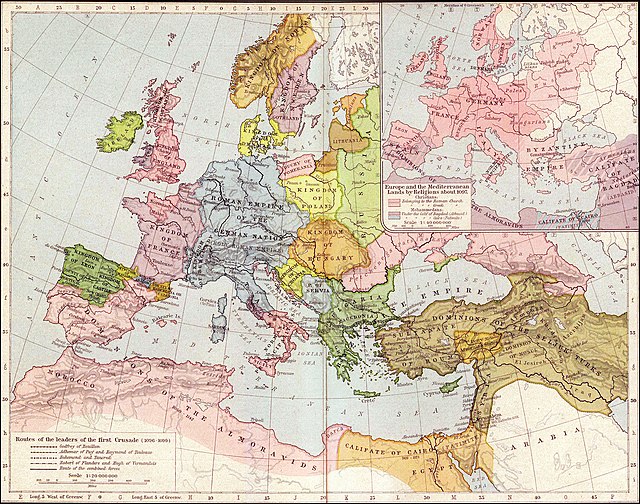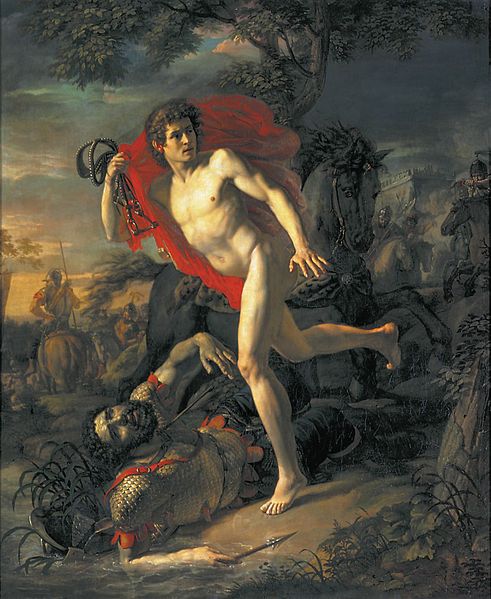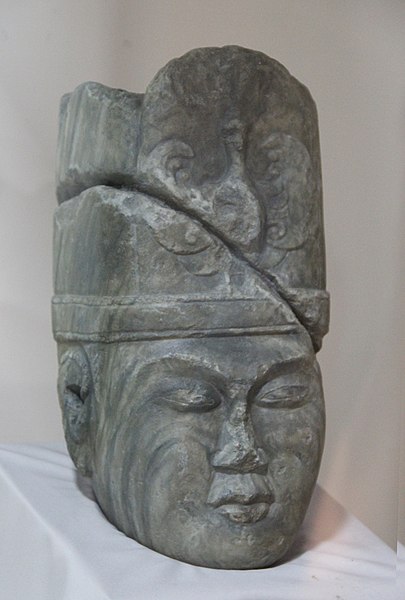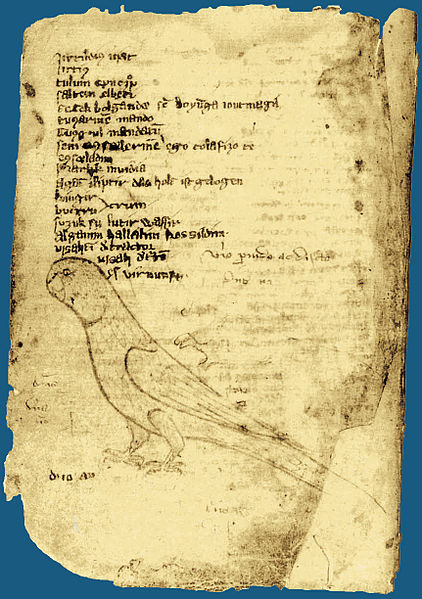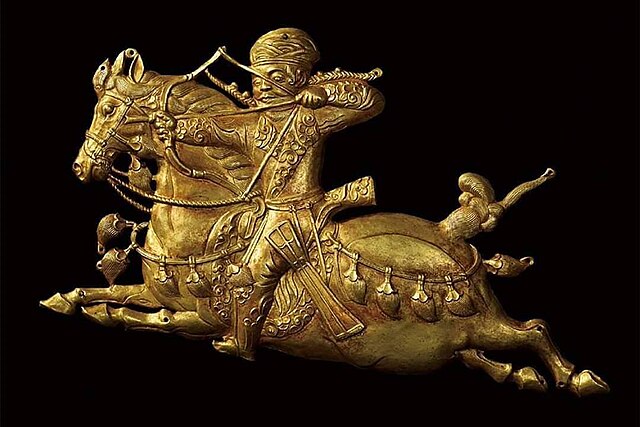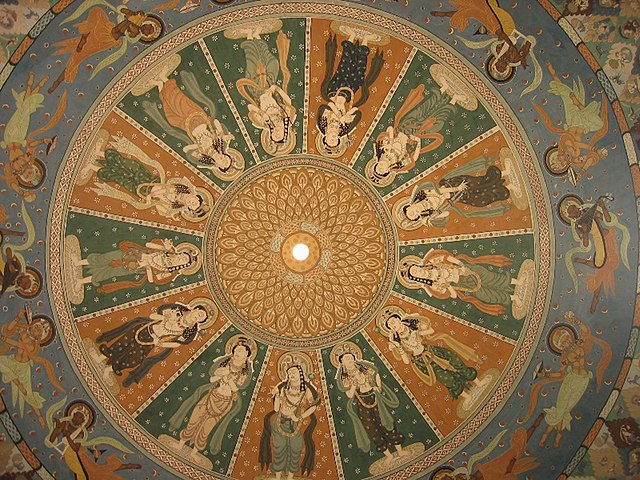The Pechenegs or Patzinaks were a semi-nomadic Turkic people from Central Asia who spoke the Pecheneg language. In the 9th and 10th centuries, the Pechenegs controlled much of the steppes of southeast Europe and the Crimean Peninsula. In the 9th century the Pechenegs began a period of wars against Kievan Rus', and for more than two centuries launched raids into the lands of Rus', which sometimes escalated into full-scale wars.
The Pechenegs slaughter the Varangian army of Rus, from the Madrid Skylitzes.
Europe 1097
Sviatoslav enters Bulgaria with Pecheneg allies, from the Constantine Manasses Chronicle.
The heroic deed of the young Kyivite during the siege of Kyiv by the Pechenegs in 968. Andrey Ivanovich Ivanov.
The Turkic peoples are a collection of diverse ethnic groups of West, Central, East, and North Asia as well as parts of Europe, who speak Turkic languages.
Bust of Kul Tigin (AD 684–731), prince of the Second Turkic Khaganate, found in Khashaat, Arkhangai Province, Orkhon River valley. National Museum of Mongolia.
A page from "Codex Kumanicus". The Codex was designed in order to help Catholic missionaries communicate with the Kumans.
A Turkic warrior from the Göktürk period. The horse's tail is knotted in Turkic style. His hair is long, braided and his big-collared caftan and boots are Turkic clothing features.
Uyghur painting from the Bezeklik murals


